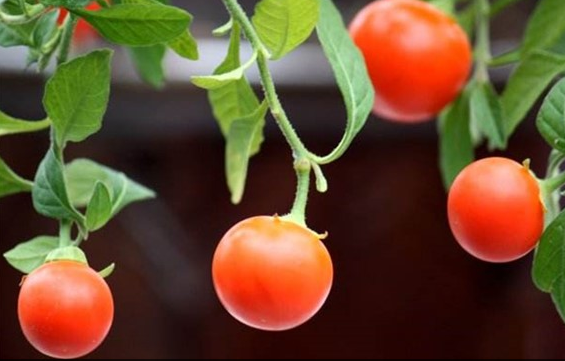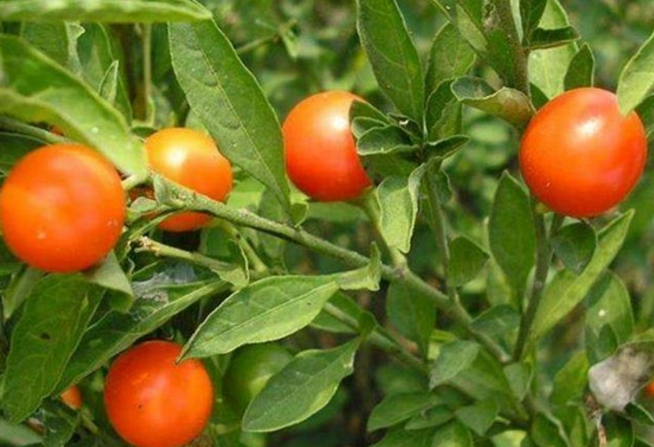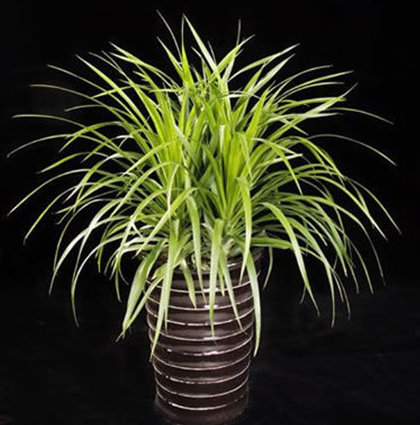Culture methods and precautions of winter coral what to do if it doesn't turn out?
Winter coral is a more popular ornamental fruit potted plant, raising a pot of winter coral at home, the fruit is round, very lovely, I believe it is a good choice for flower friends who like ornamental fruit plants. Winter coral, also known as coral cherry, Jiqing fruit, coral son, coral beans, jade coral, red coral, wild spicy eggplant, wild sea pepper, look cherry, four seasons fruit.

Culture methods and matters needing attention of winter coral
Culture methods of winter coral:
1. Soil
Potted winter coral, flowerpots to choose the right size, in the pot when choosing loose. , fertile and well-drained soil, you can add a little base fertilizer.
2. Light and temperature
Winter corals like the warm growing environment, like the sun, suitable for growing in sunny places. The suitable temperature for its growth is between 18 ℃ and 25 ℃. In winter, when the temperature is low, it is necessary to ensure that the temperature of its living environment is not lower than 5 ℃, so that it can survive the winter safely. In addition, winter corals like the sun, do not block the sun, you can keep the winter coral in a well-ventilated and brightly lit place when the summer temperature is high and the sun is strong.
3. Watering and fertilizing
Winter coral has the characteristics of drought tolerance, it is more afraid of waterlogging, so avoid stagnant water in the basin. In the process of breeding, it is necessary to keep the soil moist and properly watered, not too dry or too wet. Fertilizer can be applied with thin liquid fertilizer every half a month. Note that it is necessary to apply some phosphate fertilizer before flowering to make the flowers multiply and fruit. It is necessary to control water and fertilizer during flowering to avoid falling flowers and fruits. When the fruit grows to the size of mung bean, water and fertilizer can be restored and some phosphorus and potassium fertilizer can be properly applied to make the fruit bright.
Matters needing attention in winter coral culture:
1. Methods of reproduction
The propagation of winter coral is mostly sowing or cutting, sowing is carried out in spring, cutting can be carried out in spring or autumn.
2. Diseases and insect pests
Potted winter coral, when the temperature is high in summer, it is easy to suffer from anthracnose, harm stems and leaves, the disease is more serious. When the disease occurs, the diseased leaves can be cut off and burned, and need to be sprayed. Pests are mainly aphids, which can be sprayed with insecticides to kill insects.
3. Florescence management
The florescence management of winter coral is mainly water and fertilizer management. It is necessary to suspend fertilization and control watering, and then restore water and fertilizer after the fruit has grown.
What if the winter coral doesn't bear fruit?
1. The reason why winter corals do not bear fruit
Some people plant winter corals. Winter corals also grow very well, with luxuriant branches and leaves, and even flowers bloom very well, but the most ornamental and beautiful red fruits of winter corals do not bear fruit for a long time. How on earth is this going on? Winter corals do not have high requirements for the environment, but if too much water will cause winter corals to rot roots, branches and leaves to wither, it is very difficult for such weak winter corals to bear fruit, and during flowering, if you can't water the winter coral regularly, make the soil dry and wet, and fertilization is not fixed, it is easy to cause the winter coral not to bear fruit. Another reason is that the flowers of winter corals are not pollinated, which can also lead to the failure of winter corals to bear fruit.
2. The solution to the non-fruit of winter coral.
In fact, winter coral is relatively easy to grow, there is no very tedious maintenance methods, as long as we maintain according to the growth law of winter coral, we can make winter coral branches and leaves flourish, blossom and bear fruit. In order to make the winter coral bear fruit, we must first ensure the health of the winter coral plant, watering regularly during the blooming period of the winter coral, not letting the soil wet and dry for a few days, and fertilizing regularly to ensure that the winter coral can get sufficient nutrients. If the daily maintenance of winter coral is very good but does not bear fruit, it may be that the flowers are not pollinated, and we can pollinate winter coral artificially. Since winter corals are hermaphroditic, we only need to tap each flower with a clean wet swab.
How to raise winter coral, the methods and precautions of winter coral culture / not afraid of bright light
As a beautiful indoor potted plant, winter coral flower friends should be no stranger, it has fruit all the year round, so it is also known as the four seasons fruit. In life, many people will choose to raise a pot of winter coral at home, then how to raise winter coral? In this regard, the editor carefully sorted out the winter coral culture methods and matters needing attention, very comprehensive, friends who want to raise must have a look.
First, how to raise winter corals and understand their habits
Winter coral likes sunshine and warm environment, and it is resistant to high temperature, no sunburn above 35 ℃, but also resistant to direct light, even in the summer sun. Therefore, when breeding indoors, it should be placed in a bright place, and warm measures should be taken in winter. So how to raise winter coral, it is very simple, to meet its growth habits, specific requirements for us to move on.
II. Culture methods and matters needing attention of winter coral
1. Basin soil requirements
How to cultivate potted winter coral, the first thing is to choose potted soil. Although to the florist to buy winter coral, there are existing pots and soil, but in order to raise it well, it is necessary to re-choose flowerpots and soil.
Flowerpot: just get a beautiful one, but pay attention to the right size. Soil: although winter coral does not require much of the soil, it is best to choose slightly acidic or neutral soil that is fertile, loose and well drained. When applying soil, you can add a little base fertilizer to the soil.
2. Lighting
In the cultivation of winter coral, light is indispensable. Winter coral likes light and is not afraid of strong light, so it can also be placed outside in the summer sun.
Note: winter corals need plenty of light to grow, direct light for at least 4 hours a day, and no shade, preferably in front of a bright southeast window or balcony.
3. Temperature
In the growth process of winter coral, the temperature also needs to be regulated accordingly. Winter coral likes to be warm and resistant to high temperature, and the most suitable growth temperature is between 18 and 25 ℃, so if you want it to grow well, it is best to maintain this temperature.
Note: winter corals are not cold-resistant and should be kept indoors when the temperature is low in winter. And the ambient temperature should not be lower than 5 ℃, otherwise it will be frostbitten and cannot survive the winter safely.
4. Watering
How to raise winter coral, watering is indispensable. It is understood that winter coral is not resistant to drought, but it is afraid of waterlogging, so there is stagnant water in the basin. In indoor breeding, we should appropriate amount of watering, keep the basin soil moist, should not be too dry or too wet.
Note: when winter coral blossoms, we should pay attention to control watering, so as to avoid falling flowers and fruits. When the fruit grows to the size of mung beans, it can be watered normally.
5. Fertilization
After watering, let's talk about fertilization, which is also very important in the culture of winter coral. Winter coral likes fertilizer, and flower friends can apply thin liquid fertilizer to it every half a month.
Note: before the winter coral blossoms, it should be given some phosphate fertilizer, which can make the winter coral flowers more fruitful.
6. Diseases and insect pests
In the process of breeding, beginners often encounter some problems, such as when the temperature is high, the plant suffers from anthracnose, harms the stems and leaves, and the disease is more serious. In addition, winter corals can be found by aphids because of improper maintenance. All these will seriously affect the ornamental nature of winter coral, so when diseases and insect pests are found, they should be controlled immediately. In this regard, you can refer to the pest control of winter coral.
Generally speaking, winter coral is quite easy to raise, but if you want to have a lot of flowers and fruits, you need to pay more attention to water and fertilizer, so that winter coral can produce beautiful flowers. On the method of winter coral culture, the editor introduced here, the flower friends might as well raise and see, and finally wish everyone's winter coral can bloom beautiful flowers.
Culture methods and matters needing attention of winter coral
Latin name Solanum pseudocapsicum L. Var. Diflorum (Vell.) Bitter
Don't call it coral cherry or Jiqingguo.
The plant kingdom.
Phylum angiosperm
Dicotyledonous class
Subclass synpetalous flower
Order Tubularia
Family Solanaceae
Family eggplant tribe
Genus Solanum
The distribution area is native to Europe and subtropics, but it is wild in Yunnan, China.
Winter coral, now known as coral bean (Solanum pseudocapsicum L. Var. Diflorum (Vell.) Bitter). Erect shrubs, much branched into clusters, cultivated for 1-2 years. The plant height is 30ml / 60cm. Leaves alternate, narrowly oblong to oblanceolate. Summer and autumn flowering, flowers small, white, axillary. Berries, dark orange-red, globose, 1 Mel 1.5 cm in diameter. After flowering, the fruit will not fall for a long time, but it can be retained on the branches until after the Spring Festival. Now there are dwarf species cultivated, and the plant shape is short and multi-branched. Berries, seeds small, fruit shaped in a wide ellipsoid, apical tip. Aliases are: coral cherry, Jiqing fruit, coral son, coral beans, jade coral, red coral, wild spicy eggplant, wild sea pepper, look cherry, four seasons fruit.
1. Morphological characteristics.
Coral beans (Beijing) Jade Coral (Japan); Pomegranate (Yixian County, Shaanxi Province); Yanghai Pepper (Leibo, Sichuan); Winter Coral (Anjiang, Hunan). (variant)
Erect branched shrubs, 0.3-1.5 m tall, branchlets branched tomentose when young, then gradually deciduous. Leaves twin, unequal in size, elliptic-lanceolate, 2-5 cm long or slightly long, 1-1.5 cm wide or slightly wide, apex obtuse or mucronate, base cuneate-decurrent into short stalk, leaf surface glabrous, leaves often dendritic tomentose along veins below, margin entire or slightly undulate, midrib protruding below, lateral veins 4-7 on each side, obvious below Petiole ca. 2-5 mm, dendritic tomentose when young, then gradually deciduous. Inflorescences short, axillary, usually 1-3-flowered, solitary or into scorpion tails, total pedicels short to nearly absent, pedicels ca. 5 mm, flowers small, ca. 8-10 mm in diam. Calyx green, 5-parted, lobes ovate-lanceolate, tip obtuse, ca. 5 mm long, Corolla white, tube concealed in calyx, ca. 1.5 mm long, limb about 6.5-8.5 mm long, 5-parted, lobes ovoid, ca. 4-6 mm long, ca. 4 mm wide, tip tip or obtuse; filaments ca. 1 mm long, anthers oblong, about 2 times as long as filaments, apical hole slightly inward Ovary suborbicular, ca. 1.5 mm in diam., style ca. 4-6 mm, stigma truncate. Berries solitary, globose, coral red or orange, 1-2 cm in diam.; seeds flattened, ca. 3 mm in diam. The flowering period is from April to July and the fruit ripening stage is from August to December.
2. Related species
Coral cherry (original variety)
Var. Pseudo-capsicum
Erect branched shrubs, up to 2 m tall, smooth glabrous throughout. Leaves alternate, narrowly oblong to lanceolate, 1-6 cm long and 0.5-1.5 cm wide, apex pointed or obtuse, base narrowly cuneate extending into petiole, margin entire or undulate, both surfaces smooth glabrous, midvein protruding below, lateral veins 6-7 pairs, more obvious below; petiole ca. 2-5 mm, cannot be completely separated from leaf blade. Flowers solitary, rarely caudate, without peduncle or nearly without peduncle, extraaxillary or subopposite leaf, pedicel ca. 3-4 mm; flowers small, white, ca. 0.8-1 cm in diam.; calyx green, ca. 4 mm in diam., 5-lobed, lobes ca. 1.5 mm long; Corolla tube concealed in calyx, less than 1 mm long, limb ca. 5 mm long, lobes 5, ovate, ca. 3.5 mm long, ca. 2 mm wide Filaments less than 1 mm long, anthers yellow, rectangular orbicular, ca. 2 mm; ovary suborbicular, ca. 1 mm in diam., style short, ca. 2 mm, stigma truncate. Berries orange-red, 1-1.5 cm in diameter, calyx persistent, petiole ca. 1 cm long, tip dilated. Seeds discoid, flattened, ca. 2-3 mm in diam. Flowering in early summer and fruiting in late autumn.
3. Growth habits
Especially found in the field side, roadside, jungle or ditch edge, 1350-2800 meters above sea level is common, 600m area also has distribution.
Winter corals like sunshine, warmth and high temperature resistance, and there is no sunburn above 35 ℃. Not resistant to shade, cold, drought, hot summer afraid of rain, waterlogging. It is not strict with the soil, but it grows vigorously on the slightly acidic or neutral soil with loose fertility and good drainage. It's very cute. Not cold-resistant, pot plants in the north need to go to the greenhouse to survive the winter.
- Prev

Is winter coral poisonous? can you breed indoors? what are the breeding methods?
Winter coral is a more popular ornamental fruit pot, raise a pot of winter coral at home, the fruit is round, very lovely, I believe it is a good choice for flower friends who like ornamental fruit plants. Is winter coral poisonous? can you cultivate it indoors? is winter coral poisonous? in fact, winter coral is indeed poisonous.
- Next

Is the dragon blood tree poisonous? can you keep it at home? what are the reasons for yellowing leaves?
Dragon blood tree, also known as the tree of blood, blood-activating holy medicine, plant birthday. It is the precious Yunnan red medicine Draconis Draconis, also known as Qilin Draconis, which is as famous as Yunnan Baiyao. Li Shizhen is praised as a holy medicine for promoting blood circulation in the Compendium of Materia Medica. So is this plant poisonous in the end? Let's get to know it.
Related
- Fuxing push coffee new agricultural production and marketing class: lack of small-scale processing plants
- Jujube rice field leisure farm deep ploughing Yilan for five years to create a space for organic food and play
- Nongyu Farm-A trial of organic papaya for brave women with advanced technology
- Four points for attention in the prevention and control of diseases and insect pests of edible fungi
- How to add nutrient solution to Edible Fungi
- Is there any good way to control edible fungus mites?
- Open Inoculation Technology of Edible Fungi
- Is there any clever way to use fertilizer for edible fungus in winter?
- What agents are used to kill the pathogens of edible fungi in the mushroom shed?
- Rapid drying of Edible Fungi

